Solar is one of the best renewable energy options currently available, and it is growing exponentially as a result. But with the growth, many myths and misconceptions can prevent people from fully understanding and utilizing this valuable resource. In this blog, the HBCU Clean Energy Initiative will address some of the most common myths and misconceptions surrounding solar power as well as some of the breakthroughs that will make it even more appealing in the future.
Myth #1: Solar panels only work in sunny climates. One of the most persistent myths surrounding solar energy is that it only works in areas with constant, strong sunlight. While it’s true that solar panels are most effective in bright sunlight, they can still generate electricity on cloudy days or in areas with less-than-ideal solar conditions. In fact, some countries with the highest solar energy adoption rates, such as Germany and the Netherlands, are located in northern latitudes with relatively low levels of sunlight. Solar panels are also effective in areas with high levels of air pollution, which can enhance the performance of solar panels by reflecting more sunlight onto them.
Myth #2: Solar energy is too expensive. While solar energy systems can have a high upfront cost, they are becoming more affordable yearly. In fact, the price of solar panels has dropped by over 70% in the past decade alone. Additionally, many financial incentives are available to help offset the cost of installing a solar energy system, such as federal tax credits, state and local incentives, and financing options allowing homeowners to pay for their solar panels over time. In many cases, the cost of a solar energy system can be recouped within just a few years through lower energy bills, making solar an intelligent financial investment in the long run. Community solar is also becoming more available to individuals living in multi-unit dwellings.
Myth #3: Solar energy is unreliable. Another common misconception about solar power is that it’s unreliable and can’t provide a consistent energy source. While it’s true that solar energy output can vary depending on weather conditions, modern solar energy systems are designed to be highly reliable. They are equipped with battery storage that allows them to store excess energy generated during the day and use it at night or during periods of low sunlight, ensuring a steady energy source even when sunlight is scarce.
Myth #4: Solar energy is too complicated to install. While installing a solar energy system can be complex, it’s easier than many people believe. Most reputable solar energy companies will manage the entire installation process, from conducting a site assessment to connecting the panels to the electrical grid. Homeowners don’t need any technical expertise or knowledge of solar power to have a solar energy system installed on their property. All they need to do is work with a reputable solar company and let them manage the rest.
Solar Energy Advancements. Breakthroughs in solar panel technology are making solar energy more affordable, efficient, and accessible than ever before and are helping to accelerate the transition to a clean energy economy. Some of the significant breakthroughs include:
- Perovskite Solar Cells: This new type of solar cell uses perovskite materials to convert sunlight into electricity. They are cheaper and more efficient than traditional silicon solar cells.
- Tandem Solar Cells: Tandem solar cells use multiple layers of materials to absorb different wavelengths of light, allowing them to convert more sunlight into electricity than traditional solar cells.
- Bifacial Solar Panels: These solar panels absorb sunlight from both sides, increasing their efficiency by up to 30%, making them increasingly popular in both commercial and residential applications.
- Concentrated Solar Power (CSP): CSP technology uses mirrors or lenses to concentrate sunlight onto a small area, which heats a fluid and produces steam to power a turbine. CSP is becoming more popular in large-scale solar power plants.
- Thin-film Solar Cells: These cells use lightweight and flexible materials that can be easily integrated into building supplies. They are less efficient than traditional solar cells but are cheaper and more versatile.
- Transparent Solar Panels: Designed to be transparent, these panels can be integrated into windows, skylights, and other building materials. While still in the early stages of development, they have the potential to revolutionize the way we generate and use solar power.
In conclusion, solar energy is a valuable and reliable renewable energy source that can significantly benefit homeowners and businesses. By debunking these common myths and misconceptions and highlighting the recent advancements, HBCU Clean Energy Initiative hopes this encourages more people to explore the benefits of solar power and consider its usage.
To find out more about how the HBCU Clean Energy Initiative can bring clean energy to your community, click here.
To read more HBCU Clean Energy Initiative blogs, click here.

